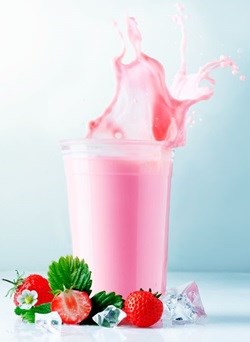






Gauteng region accounted for more than a third of the total volume sold in 2016, followed by the Western Cape and then KwaZulu-Natal. Most of the major national players are situated in these three major regions, thus there may be a natural supply skew to these regions.
The average CPI (Consumer Price Index) was 6.4% during the year under consideration (2016), this being quite close to the annual increase in drinking yoghurt pricing. It is believed that drinking yoghurt price increase in 2016 may have been underpinned by some players downsizing their pack sizes to between 250ml and 350ml, which translated into a higher rand per litre cost for the smaller denomination variants.
A shortage of raw materials caused by the drought may have also contributed to the growth in average price. The players that imported their raw materials suffered when the value of the rand deteriorated, as this was done at an above average price and cut into their margins.
It is believed that like other food and beverage products, low consumer spending, as well as limited supply of raw materials affected this category. Consumers are believed to be spending less money on products that they consider non-staple, as their household debt ratio remains high and the economic outlook remains negative. The low spending trend is expected to affect the drinking yoghurt category in the short to medium term.
The product is distributed mainly through the top end and bottom end retail channels, collectively accounting for 80.8% of the total volume sold in 2016. These outlets are characterised by strong marketing and promotional activities. Print, in-store display, radio and television are some of the mediums used for promotional and marketing activities in order to attract more customers and keep drinking yoghurt brands top-of-mind.
Export volumes showed the highest relative growth rate compared to other channels for 2016. It is hypothesised that this was due to favourable export conditions created by the lower rand value, as well as growing category demand in neighbouring African states. The local drinking yoghurt market is fairly competitive and producers are actively looking for alternative markets to grow sales. It is believed that this combination of market factors all contributed to the raised export growth seen for 2016.
The drinking yoghurt category uses predominantly rigid plastic bottles as the primary pack format. This format is dominated by HDPE and PET bottles, which took share from cartons, plastic tubs and sachets during 2016.
The category is expected to continue growing in the short to medium term, as new markets are established and competition increases, lowering the average selling price and making drinking yoghurt a more attractive prospect for consumers.